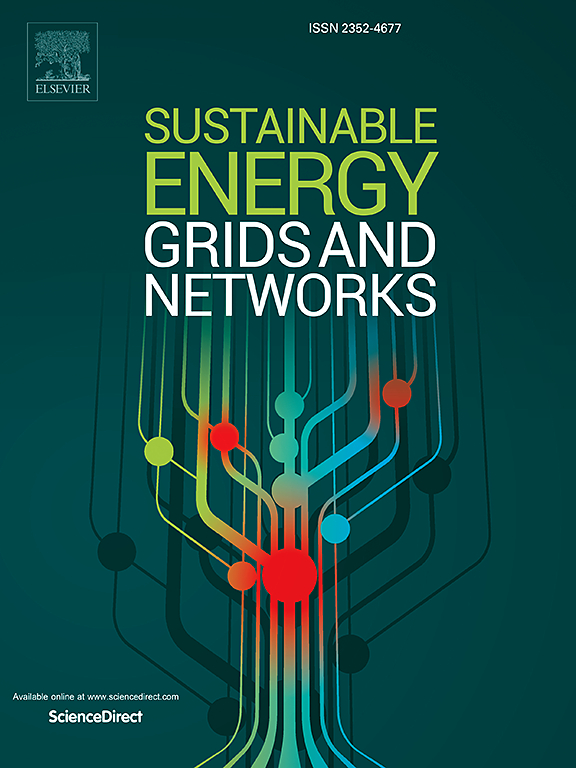Evaluating the advantages of compressed air energy storage, demand response program and dynamic rating technologies in the risk-constrained optimal scheduling of wind-based power system
IF 5.6
2区 工程技术
Q2 ENERGY & FUELS
引用次数: 0
Abstract
This paper provides a risk-constrained stochastic day-ahead scheduling model for a power system integrated with smart technologies. Multiple uncertainties including wind speed, ambient temperature, sun irradiation and load demand are covered by the stochastic method. On the other hand, the downside risk constraint (DRC) is used to involve risks associated with uncertainties. Smart technologies including dynamic line/transformer rating (DLR and DTR), compressed air energy storage (CAES) unit and demand response program (DRP) are integrated into the power system to create a flexible system to decrease total cost, emissions, wind curtailment and load shedding as main aims of this work. AC power flow framework is used in this study to show the impact of smart technologies on the voltage profile of the test system. The benefits of the proposed model are surveyed through different case studies implemented on the IEEE 24-bus system. The results demonstrate that with smart technologies 100 % of wind power is absorbed which is in line with the goals of this work. Also, the voltage profile is smoother with smart technologies. Moreover, results show that the operator can properly handle the risk of uncertainties with the DRC approach.
评估压缩空气储能、需求响应方案和动态评级技术在风电系统风险约束优化调度中的优势
提出了一种基于智能技术的电力系统风险约束随机日前调度模型。随机方法涵盖了风速、环境温度、太阳辐照和负荷需求等多种不确定性。另一方面,下行风险约束(DRC)用于涉及与不确定性相关的风险。包括动态线路/变压器额定功率(DLR和DTR)、压缩空气储能(CAES)单元和需求响应程序(DRP)在内的智能技术被集成到电力系统中,以创建一个灵活的系统,以降低总成本、排放、弃风和减载,这是这项工作的主要目标。本研究使用交流潮流框架来显示智能技术对测试系统电压分布的影响。通过在IEEE 24总线系统上实施的不同案例研究,对所提出模型的优点进行了调查。结果表明,通过智能技术,100% %的风力发电被吸收,这符合本工作的目标。此外,通过智能技术,电压分布更平滑。此外,研究结果表明,使用DRC方法可以很好地处理不确定性风险。
本文章由计算机程序翻译,如有差异,请以英文原文为准。
求助全文
约1分钟内获得全文
求助全文
来源期刊

Sustainable Energy Grids & Networks
Energy-Energy Engineering and Power Technology
CiteScore
7.90
自引率
13.00%
发文量
206
审稿时长
49 days
期刊介绍:
Sustainable Energy, Grids and Networks (SEGAN)is an international peer-reviewed publication for theoretical and applied research dealing with energy, information grids and power networks, including smart grids from super to micro grid scales. SEGAN welcomes papers describing fundamental advances in mathematical, statistical or computational methods with application to power and energy systems, as well as papers on applications, computation and modeling in the areas of electrical and energy systems with coupled information and communication technologies.
 求助内容:
求助内容: 应助结果提醒方式:
应助结果提醒方式:


